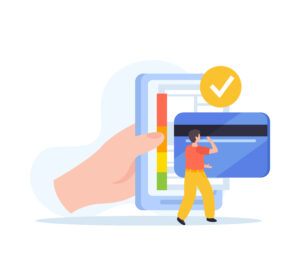TikTok’s €530 Million GDPR Fine Raises Stakes for Cross-Border Data Transfers

TikTok’s €530 million GDPR fine from Ireland’s data watchdog has reignited pressure on global platforms. They need to tighten their cross-border data governance. The ruling was delivered on May 2 by the DPC. It centered on TikTok’s failure to safeguard EU user data. TikTok also failed to transparently manage data accessed by employees in China.
The penalty, the third-largest under GDPR to date, stemmed from two violations. The company misled users about the potential for data transfers to China. It failed to implement proper safeguards. These safeguards were necessary to ensure that such transfers met EU protection standards. Regulators concluded that TikTok could not demonstrate that personal data accessed remotely from China received the same level of protection. This level of protection is expected within the EU.
TikTok has appealed the decision and insists its compliance program is evolving. It also points to Project Clover, its initiative to localize European data storage and processing. But for regulators, TikTok’s reactive approach failed to address the root lack of accountability.
Industry Wake-Up Call
TikTok’s fine is not just a high-profile enforcement case. It clearly warns tech companies. Local data policies must align with their global operations. Regulators are no longer satisfied with privacy paperwork. They want real technical controls, live documentation, and provable restrictions on cross-border access.
That shift has accelerated interest in privacy tech. Companies are under increasing pressure to prove compliance using tools that not only monitor but actively minimize risk exposure.
Three privacy-enhancing technologies are emerging as critical for companies handling international data flows.
- OneTrust and BigID (Data Mapping)
Data inventory and flow tracking are foundational. Tools like OneTrust and BigID help organizations locate personal data across systems. They map the data’s movement across borders. These tools can also visualize where the data could trigger regulatory scrutiny. If TikTok had fully operationalized such a platform, it might have identified the access points from China sooner. TikTok might have flagged these access points earlier.
- Duality and Cape Privacy (Privacy-Preserving Computation)
These tools do not send raw data to foreign systems. They enable encrypted analysis within a secure framework. That means engineers or analysts can work with the data without actually seeing or receiving it. These techniques are gaining traction in financial services. They are also gaining traction in healthcare. They could have helped TikTok mitigate exposure during remote engineering work.
- TrustArc and Usercentrics (Consent and Disclosure Management)
TikTok was penalized not just for how data was accessed. It was also penalized for how little users knew about it. Consent platforms automate regional compliance. They ensure that data subjects receive tailored, accurate information. This information explains how and where their data may travel. Logs and dashboards provide regulators with clear records of user permissions. TrustArc and similar platforms are already standard for EU-facing apps.
Why TikTok’s Case Resonates
What makes TikTok’s case especially revealing is the gap between the company’s operational structure and its public commitments. For years, TikTok maintained that EU user data was stored locally. But in April 2025, the company admitted that some data had in fact been stored in and accessed from China. This reversal undermined earlier assurances and set the stage for the DPC’s severe response.
Regulators viewed this as more than a mistake. It was seen as a breakdown in privacy governance. The DPC said TikTok “did not demonstrate, by appropriate measures or safeguards. It failed to show that personal data accessed remotely from China was protected effectively. These protections were not essentially equivalent to those required under EU law.”
In response, TikTok has launched “Project Clover.” It is a regional data security initiative aimed at keeping European data within the EU. The project also seeks to minimize foreign access. But critics argue that the project came too late and only after regulatory pressure reached a boiling point.
What Comes Next
The European Data Protection Board has called for more consistent enforcement across member states. Authorities in Germany, France, and Italy are reportedly reviewing their methods for monitoring cross-border data handling. They are focusing especially on platforms that use AI or serve minors.
Meanwhile, Ireland’s DPC opened a fresh investigation in July. This new probe focuses specifically on whether TikTok continues to store European user data in China despite its earlier claims. That case is still ongoing and could lead to additional sanctions.
For other companies, the lesson is direct. Data transfers cannot be treated as technical or abstract risks. Legal mechanisms are not enough unless they are enforced operationally and supported by evidence.
Tools that help visualize data flows, secure data processing, and manage user consent are becoming vital in this effort. They don’t eliminate risk. However, they offer companies a way to demonstrate responsibility in real time. This is a critical factor as regulators demand proof rather than promises.
Final Thought
TikTok’s €530 million GDPR fine marks a new chapter in data protection enforcement. It shows that regulators are ready to penalize companies that fail to align their practices with their promises. For businesses managing EU data across borders, compliance is no longer a paper exercise. It must be embedded deeply and proven continuously.
Privacy technology is now a key part of that process. For companies looking to avoid TikTok’s fate, adopting these tools is not optional. It is essential.





